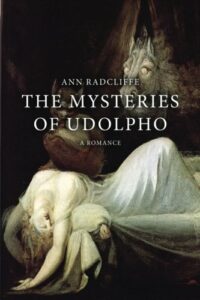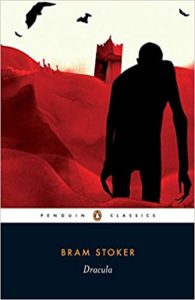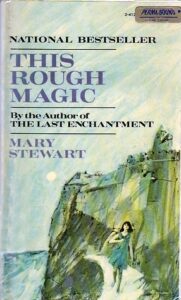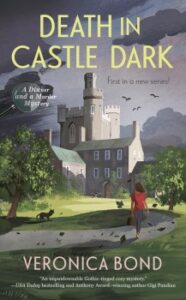Any list of Gothic castles must begin with the origins of the Gothic. The first Gothic novel has been attributed to both Horace Walpole and Ann Radcliffe, so I’ll begin with them.

The Castle of Otranto. (1764) by Horace Walpole
This strange and atmospheric little novel influenced many Gothic novels to follow. Walpole was fascinated with Gothic architecture, and so the Gothic novel sprang from both the Gothic structure and Walpole’s fertile imagination. One of Walpole’s many archetypes was the mystery of secret passages and chambers:
“The lower part of the castle was hollowed into several intricate cloisters; and it was not easy for one under so much anxiety to find the door that opened into the cavern.”

The Mysteries of Udolpho (1794) by Ann Radcliffe
Radcliffe’s Gothic tale shared many of the tropes found in Walpole’s work, including the oppressive use of language. Things in the castle tend to be huge, massive, enormous:
“While Emily gazed with awe upon the scene, footsteps were heard within the gates, and the undrawing of bolts; after which an ancient servant of the castle appeared, forcing back the huge folds of the portal, to admit his lord.”

Dracula (1897) by Bram Stoker
Stoker’s novel fits the category of “Gothic Horror,” but there is delicious mystery in his setting: an isolated castle in the Carpathian mountains that cannot be found on a map, and from which one can hear little more than the howling of wolves. Count Dracula himself describes the chilling atmosphere:
“Moreover, the walls of my castle are broken; the shadows are many, and the wind breathes cold through the broken battlements and casements.”

Rebecca (1938) Daphne du Maurier
Du Maurier’s setting, Manderley, is a giant family estate off the Cornwall coast; it is not officially a castle, yet the setting meets many Gothic criteria, including isolation, a hint of the supernatural, a heroine thrown into an alien environment and utterly without aid, and of course the requisite creepiness of the giant dwelling, Manderley, which the reader first sees in a horrific image via the narrator’s dream:” A cloud, hitherto unseen, came upon the moon, and hovered an instant like a dark hand before a face. The illusion went with it, and the lights in the windows were extinguished. I looked upon a desolate shell, soulless at last, unhaunted, with no whisper of the past about its staring walls. The house was a sepulcher, our fear and suffering lay buried in the ruins. There would be no resurrection.”

This Rough Magic (1964) Mary Stewart
Gothic Romantic Suspense was a dominant genre of the mid-20th century, and perhaps the greatest writer in this genre was Mary Stewart. Well-travelled and well-versed in English literature, Stewart imbued all of her novels with Gothic elements. One of the best was This Rough Magic, a line from The Tempest; in fact, Stewart used this Shakespearean play as a repeated motif in her novel. One of her characters, a retired actor named Julian Gale, was known for his portrayal of Prospero; Gale now resided on Corfu, in a rented castle, the Castello di Forli, which Stewart uses for great Gothic effect The castle is dark and oppressively medieval: “He led the way along the corridor. To either side the light glimmered yellow on the pathetic heads of deer and ibexes…along with stuffed birds. Every other available foot of wall space was filled with weapons—axes, swords, daggers and ancient firearms which I identified as flintlocks and muskets, probably dating from the Greek War of Independence.”
There are a multitude of mysteries with Gothic castles as imagined by the earliest Gothic writers, but this little list, spanning three centuries, offers some delightful variations of Gothic motifs.
***


















